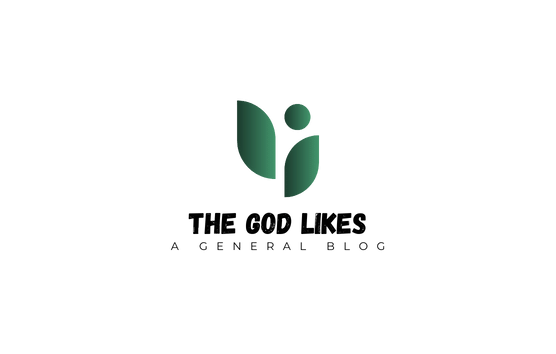For every product development process to succeed, efficient product management is necessary. It ensures that everything to be done corresponds to consumers’ demands or pain points and that resources are utilized effectively. It indicates that product managers ought to approach their work methodically.
Frameworks are a valuable tool for this technique because they provide a framework that is both thorough and objective for things like opportunity appraisal, prioritizing, and the formulation of criteria, among other things.This article will introduce the best frameworks that have typically been utilized by some of the most successful and largest firms that have ever existed.
The following Product Management frameworks will be discussed in depth throughout this article. These frameworks take into account various criteria, like the number of employees, the amount of time spent on product management, the available resources, and so on. You can Click Here to know the difference between technical and operational.
Table of Contents
Best Technical Frameworks for Product Management
1. Minimum Viable Product
This approach, which emphasizes learning as an essential component of building new products, is credited to Eric Reis, the author of Lean Startup. The method, also known as Lean Software Development, requires the initial creation of a product that is as fundamental or fundamental as possible for testing.
The group works together to develop a solution that addresses the issue at hand using just the necessary features and capabilities. It makes it possible to collect customer input and validate assumptions to determine what aspects of the service might be improved.
2. Working Backwards
To determine if the customer’s complaint has been resolved, your product team should first pretend the product has already been produced. This model inverts the conventional order of product creation by beginning with the final step. It is also referred to as the Amazon technique because it was developed and promoted by Amazon.
A press release announcing the launch of the product is the first step. In it, we outline the issue at hand and the benefits our solution offers over the competition. It ensures that the product is worthwhile before any development time is spent.
3. Business Model Canvas
The goals of this model are to reduce the time it takes to build a product and to make it more apparent how the product team will provide value. In order to bring a product to market, there are many moving parts, and the business model canvas shows all of them at once in a comprehensive, high-level picture.
Organizations of varying sizes utilize this model to comprehend better and define their business models. It is often used with the Value Proposition Canvas and other strategic management tools, although its components will differ from company to company.
4. North Star Framework
This paradigm, which Amplitude presented, revolves around a single statistic considered the most essential of all others: the North Star Metric. As described by startup advisor Sean Ellis, this statistic “best represents the fundamental value that your product gives to users.” The North Star Metric is supported by a variety of essential inputs, which work together to help propel it. Your team makes an effort in all it does every day to affect these critical inputs.
5. Job To Be Done
Job To Be Made focuses on the product to the consumer. This framework, also known as Just-in-Time Business Development (JTBD), is all about finding out what your consumers need. Clayton Christiansen popularised it, and it stresses the importance of knowing your clients and what they require your product to perform for them. Understanding how clients make decisions during the buying process may help direct the efforts of product teams.
6. Opportunity Solution Tree
This structure, created by Teresa Torres, is a diagrammatic depiction of the steps you will take to achieve a specific goal. The visual aid was developed to streamline the opportunity finding procedure and facilitate correct opportunity prioritizing. Torres created the framework to ensure that product teams are aware of and concentrate on the “big picture.” It helps one to give careful consideration to one’s choices.
7. Weighted Impact Scoring
Among the best product managers, this is one of the most often used prioritizing models. The weighted impact scoring model uses a simple scoring system to rank initiatives or features. In order to demonstrate the significance of each criterion, you give it a weight (in percentage terms). Initiatives are evaluated and graded based on these standards.
8. RICE Prioritization
The Intercom team has created a pretty straightforward framework. The term comes from the four criteria used to assess product ideas: scope, significance, certainty, and energy. By using these factors, a cumulative score for each endeavor is calculated. There is a hierarchy of projects based on their relative values to the product and the business, as indicated by their final scores.
9. Design Sprint
Design Sprint is a method that takes its cues from design thinking. It was developed at Google Ventures by Jake Knapp, consisting of five steps or five days. The goal is to lessen the potential dangers of introducing a new product.
The team must first get together to use this design framework to comprehend, create, prototype, and verify concepts. It is done before the introduction of a product or service. It speeds up identifying fundamental problems and designing and testing solutions for those problems.
10. Customer Journey Map
Design Sprint is a method that takes its cues from design thinking. It was developed at Google Ventures by Jake Knapp, consisting of five steps or five days. The goal is to lessen the potential dangers of introducing a new product.
In order to comprehend, create, prototype, and verify concepts, the team must first get together to use this design framework. It is done before the introduction of a product or service. It speeds up the process of identifying fundamental problems as well as designing and testing solutions for those problems.
11. Kano Model
This framework, which is beneficial for finding the characteristics of a product that customers would find to be the most valuable, is based on the concepts of the Japanese academic Noriaki Kano. It has two axes: the first one depicts how successfully a need is supplied, and the second one illustrates how pleased consumers are as a result of that need being met.
The Kano Model is a tool that may be used to determine which aspects of a product are most likely to please the target audience. Give first consideration to the elements that will provide the most excellent satisfaction compared to the amount of money they will cost to install.
12. Spotify Squads
This model illustrates the culture at Spotify, which has contributed to the company’s tremendous success. It utilizes product squads, which are self-sufficient teams that are small and cross-functional. Instead of being given tasks, the framework focuses on delegating authority to groups so they can decide what they want to work on to accomplish a goal. One of the essential requirements is that the selected task must be compatible with the business’s overall plan.
13. GIST Planning
Itamar Gilad drew on the ideas of Lean Startup Growth Marketing and behavioral economics to create the GIST Planning framework. This framework was given its name because its author believed these elements were essential for guiding truly agile planning and execution. Goals include delegating authority to lower-level staff, increasing participation from all members of the team, and speeding up the development process.
14. 3 Pillars of Product
A model is a helpful tool for product managers and teams pursuing innovative, marketable products and services. Neal Cabage, a product strategist, developed a three-part framework that categorizes and describes the most crucial facets of product management. Opportunity or product discovery, product planning, and product development are the three pillars of the product life cycle.
15. Double Diamond
The British Design Council developed the 4-participant Double Diamond framework to depict the design process. Learn, Define, Create, and Present. The authors claim that the four steps are universal and may be used in any innovation method. This cycle includes both creative and analytical thought processes.
Final Thoughts
The product management frameworks presented below are used extensively by market leaders in developing their products. Each framework has the potential to function well with one or more categories of products. However, a well-thought-out strategy is necessary to be successful in the free market.

